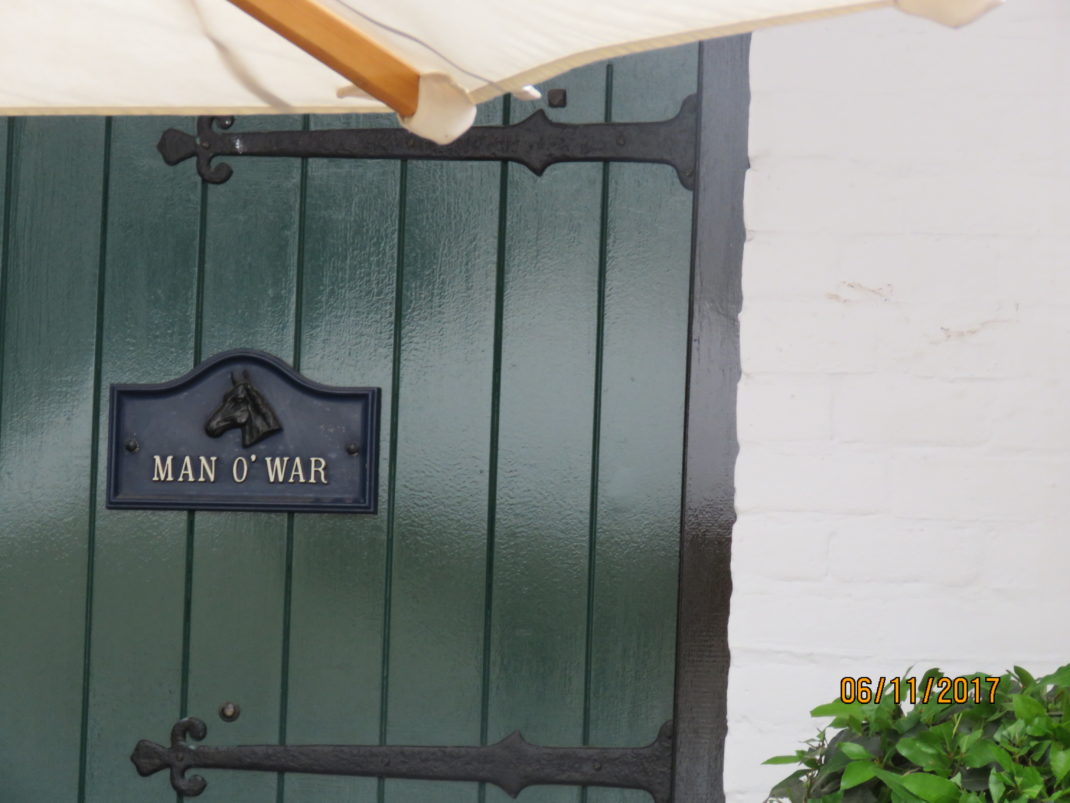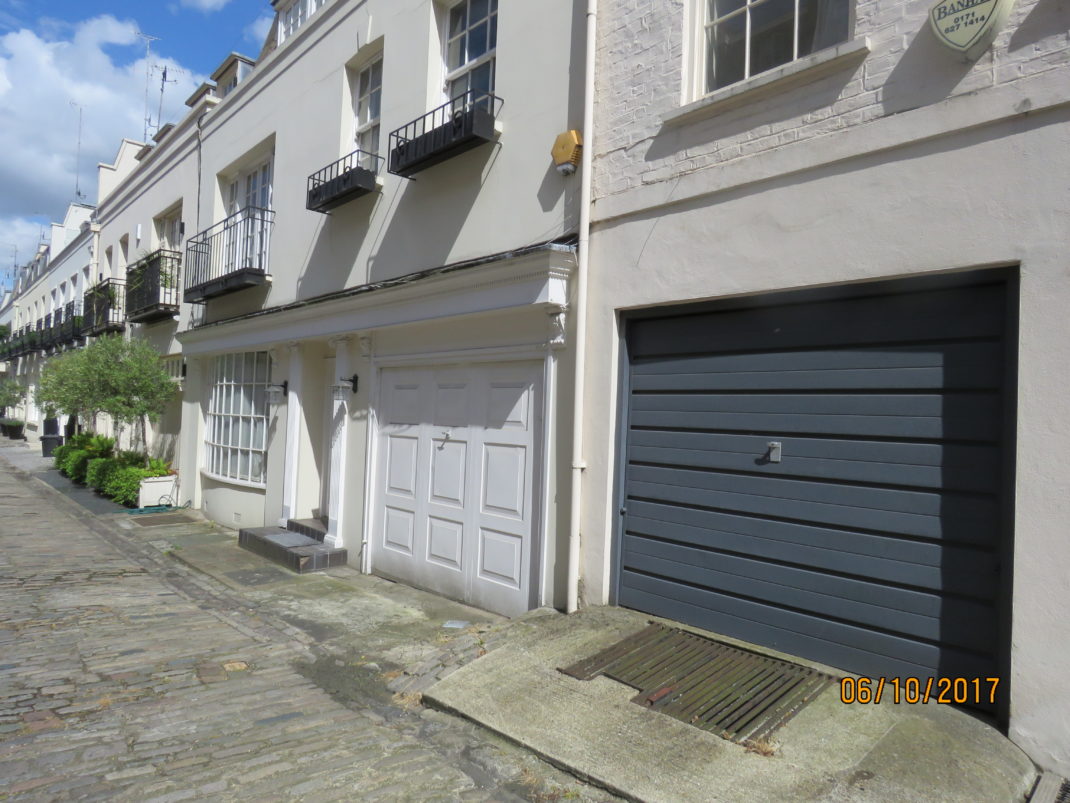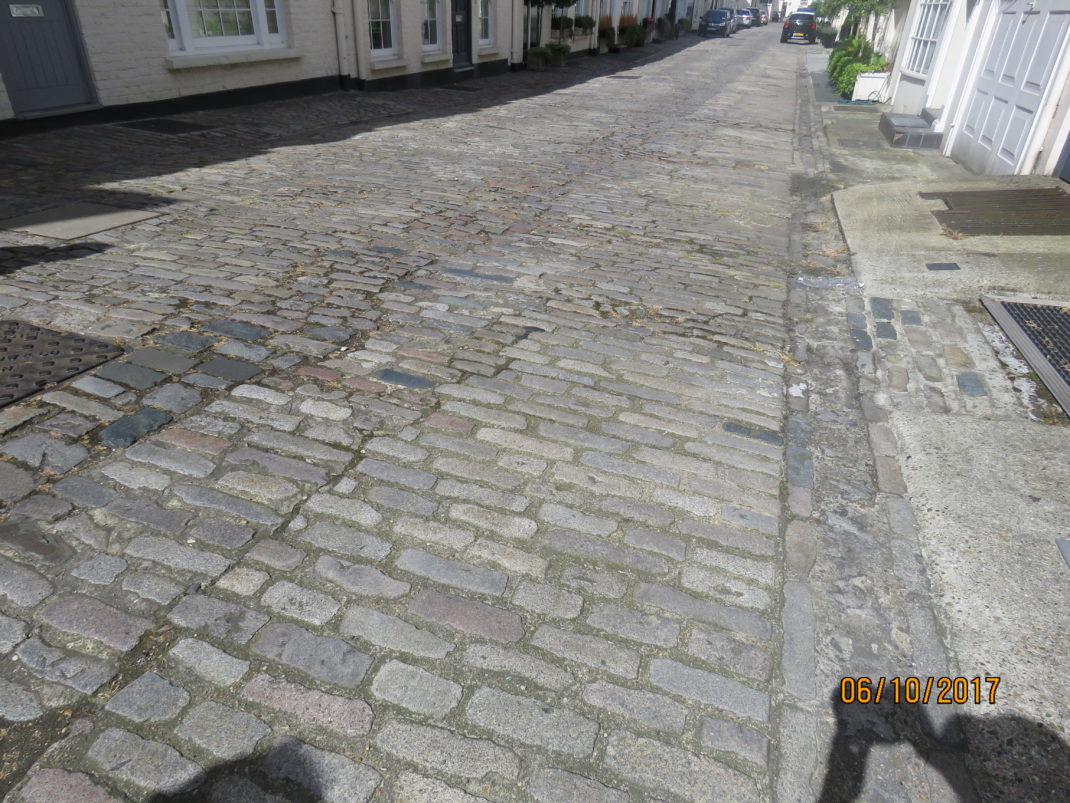As any proper Regency lady or gentleman would tell you, the quintessential London home of the upper classes was the townhouse. Each home, attached at both sides to its neighbors, were as unique as its owners. Built in central London, these exclusive dwellings provided easy access to many beautiful city parks, as well as being within walking distance of shopping and all the iconic Regency areas such as Parliament, Buckingham Palace, Gunther’s Tea House, and the famous Almack’s assembly rooms.
As London grew and townhouses sprang up to house the rich and beautiful, the need for stables also grew because the only way to get around in London was by foot or by horse (either horseback or carriage). The plentiful cabs were good enough for the working class, but the elite preferred using their private conveyance. The rich who could afford horses needed a place to keep their animals, tack, carriages, as well as drivers, grooms, and stable workers. But space was limited.
The solution was simple; build stables behind each townhouse with a road that leads to it. In London, these stables were known as mews. The mews were (and still are) tucked behind grand mansion-style townhouses in London’s most exclusive neighborhoods.
A mews had many advantages. It kept the horses and staff nearby when the lord or lady of the house needed them, although it took considerable time to hitch the team to the carriage. Having the mews around back kept the sounds and smells of the animals away from the house’s residents and guests. The cobbled lane kept the area clean and provided good drainage of waste.
Opposite the mews and cobbled lane is another row of stables behind another row of townhouses facing the next street. Often one end of this is yet another mews, or sometimes a pub, so it makes a sort of courtyard. Reportedly, many London mews had a tunnel under the garden connecting with the ground floor or basement of the house. This would have provided an easy way for servants to access the stable without disturbing their employers.
From what I have been able to determine, the term mews mews means both the London stables and the lane that leads to them. This cobbled back street, a narrow lane not much bigger than a bike lane, leads to the stables. Most of these lanes are named after the street nearby with the word mews tacked on. For example, Colville Road has the nearby Colville Mews.
The only stables that are called mews are those in London attached to the back of a London townhouse. Anywhere else, and associated with any other type of dwelling, the term stables is used.
Anciently, the mews is where the royals housed their falcons. Falcons, like most birds, moult or mew (from the French verb ‘muer’), which became the name of the place where they lived and therefore did this moulting or mewing. The word mews, oddly, is singular. Anyway, later they moved the falcons out and moved in the horses. The name mews stuck, despite the change in resident animals.
 Horses lived on the ground floor of the mews. Many of the doors had the names of the horses who lived there. Some still do. A larger area provided room for the carriages and tack. The first floor (up one level) provided rustic accommodations for the driver and ostlers (groom or stablemen a.k.a. stable lads). Above this floor, many London homes had other floors where their house servants’ quarters were located. Some London townhouses also had gardens, but since I didn’t see any set up this way, I’m not certain exactly how they were laid out.
Horses lived on the ground floor of the mews. Many of the doors had the names of the horses who lived there. Some still do. A larger area provided room for the carriages and tack. The first floor (up one level) provided rustic accommodations for the driver and ostlers (groom or stablemen a.k.a. stable lads). Above this floor, many London homes had other floors where their house servants’ quarters were located. Some London townhouses also had gardens, but since I didn’t see any set up this way, I’m not certain exactly how they were laid out.
Today, most mews houses are beautifully restored homes which open onto a safe, quiet, cobbled lane with virtually no traffic. It has become a coveted, and therefore expensive, place to live partly because they have what are now garages, which are difficult to come by in London. And mews houses and neighborhoods really are so lovely now that one can hardly believe their humble beginnings. I found a lot more photos on this blog called A Lady in London showing today’s exclusive London mews home and a few other photos here on Mother Lindas blog.
Sources:
Most of my sources are my years of study, as well as what I observed and learned during my trip to London. However, I also refereed to this sources: http://www.lurotbrand.co.uk/mews-gems/what-is-a-mews
London Townhouse, the Mews posted first on http://donnahatchnovels.tumblr.com/






No comments:
Post a Comment